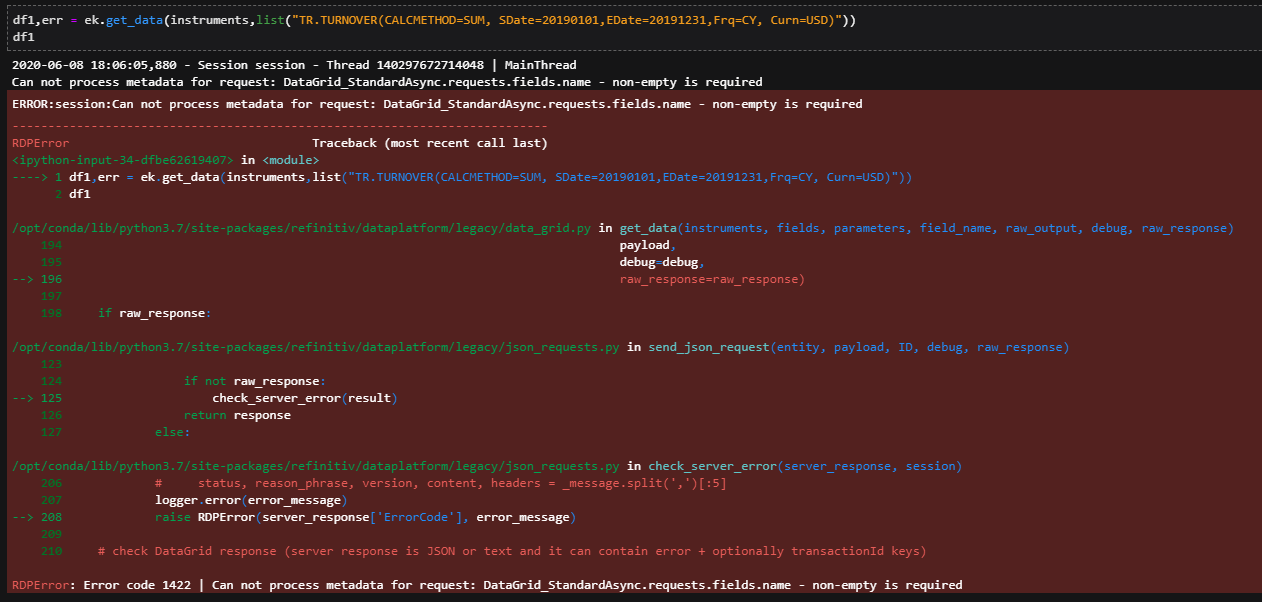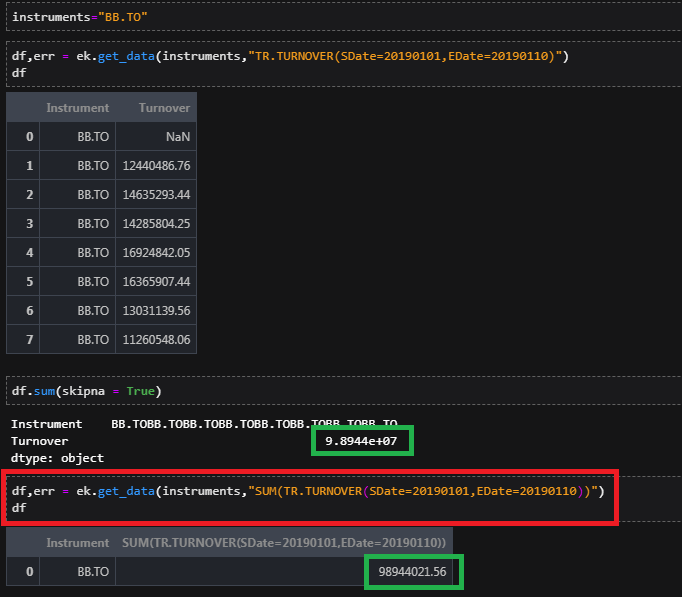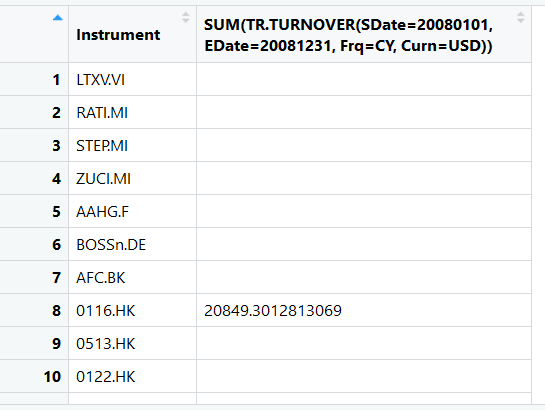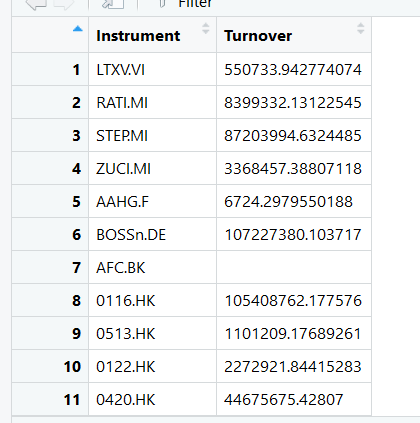Hi,
I'm trying to get the values of Turnover for a list of industries for a specific calendar year and fiscal year. However, I obtained the values which are absolutely identical for CY and FY.
Is it the right way I used to get the values or something is missing?
x <- get_data(instruments,list("TR.TURNOVER(Frq = FY, SDate = FY2008, EDate = FY2008, Curn=USD)")); #for FY2008
x <- get_data(instruments,list("TR.TURNOVER(Frq = CY, SDate = '2008-01-01', EDate = '2008-12-31', Curn=USD)"));







